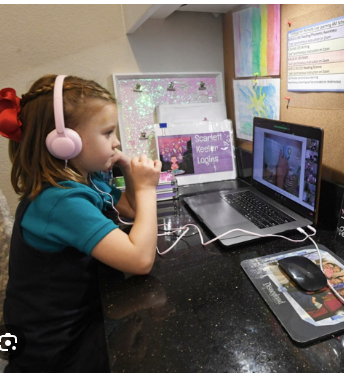Online learning offers flexibility, but it also comes with its own set of challenges—especially when it comes to keeping up with assigned readings. Unlike traditional classrooms where in-person lectures can help reinforce the material, online learners often need to rely more heavily on self-discipline and time management to stay on track. If you’ve ever felt overwhelmed by the sheer volume of reading assignments, you’re not alone. The good news? With the right strategies, you can stay ahead and make your reading sessions more effective and even enjoyable.
Understand Why Readings Matter
Before diving into strategies, it’s important to recognize the value of class readings. They’re not just busywork. These materials are carefully selected to help you grasp key concepts, prepare for discussions, and apply what you’re learning. In many online courses, the readings serve as the main source of content, making it crucial to engage with them actively.
Step 1: Review Your Syllabus Early
At the beginning of the course, take time to thoroughly read your syllabus. Highlight all reading assignments and make a list organized by week. By knowing what’s ahead, you can start planning in advance and avoid the stress of last-minute catch-up sessions.
Step 2: Make a Personalized Reading Schedule
Create a realistic weekly reading schedule based on your existing responsibilities. Break larger readings into smaller sections and assign them to specific days. For example, if you have to read 50 pages in a week, plan to read 10 pages a day over five days. Use a calendar app, a digital planner, or even a physical notebook—whatever helps you stay accountable.
Step 3: Set Up a Reading-Friendly Environment
Your surroundings can affect how well you concentrate. Find a space that is quiet, well-lit, and free from distractions. If possible, avoid reading in bed or near a television. Keep water nearby, remove unnecessary tabs or notifications, and let family members know you need uninterrupted time.
Step 4: Use Active Reading Techniques
Reading for comprehension is more than just skimming. Try using techniques like:
-
Annotating: Write notes in the margins or highlight key ideas.
-
Summarizing: After finishing a section, write a brief summary in your own words.
-
Questioning: Ask yourself questions about what you’re reading and try to answer them as you go.
-
Mapping: Use visual aids like mind maps or outlines to organize complex ideas.
These methods keep your brain engaged and make it easier to retain information for assignments and tests.
Step 5: Take Breaks and Pace Yourself
Long reading sessions can be mentally draining. Use the Pomodoro Technique or similar methods to work in short, focused intervals (e.g., 25 minutes of reading, followed by a 5-minute break). This not only helps you stay alert but also prevents fatigue.
Step 6: Use Text-to-Speech or Audiobooks (if allowed)
Sometimes, listening to content can be just as effective as reading—especially for auditory learners. Many textbooks and learning platforms offer text-to-speech features. You can also find apps that read PDFs aloud, which can be useful when you’re on the go or want to give your eyes a break.
Step 7: Join Study Groups or Online Forums
Collaborating with classmates helps reinforce your understanding and provides motivation to keep up. Participating in group discussions, even if they’re virtual, creates a sense of accountability. It also gives you the opportunity to see how others interpret the material, which can deepen your insights.
Step 8: Stay in Communication with Instructors
If you’re struggling to manage the reading workload, don’t hesitate to reach out to your instructor. They can offer tips, clarify priorities, or suggest what sections are most important for upcoming assessments. Being proactive shows responsibility and can make a positive impression.
Step 9: Track Your Progress
Keep a simple checklist or progress tracker to mark completed readings. This provides a visual sense of achievement and helps you stay organized. Some students also keep a reading journal to reflect on key lessons learned each week.
Step 10: Be Kind to Yourself
Falling behind occasionally is normal. Life happens. What’s important is how you respond. Don’t be too hard on yourself—acknowledge where you are, adjust your plan, and get back on track. Flexibility and perseverance go a long way in online education.


